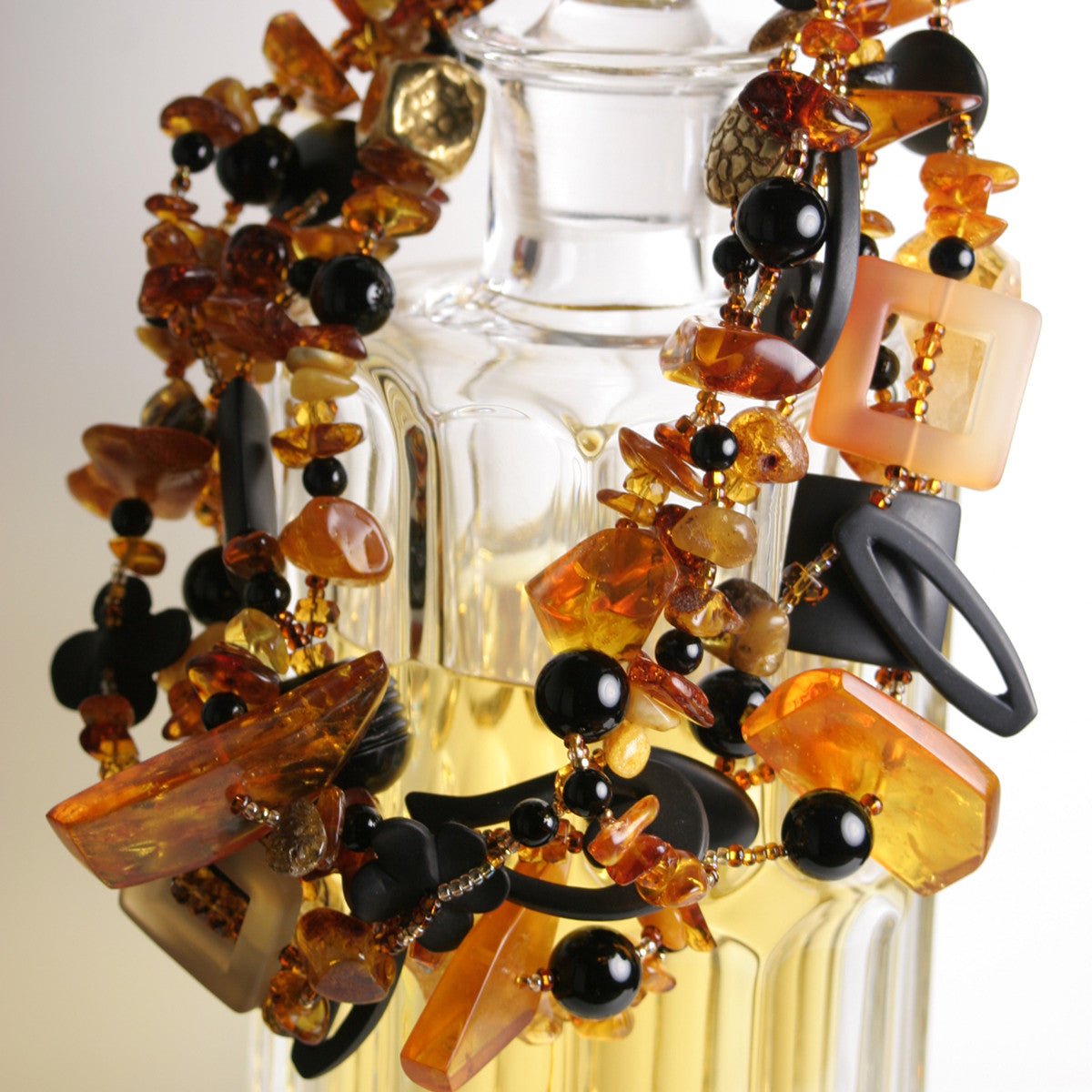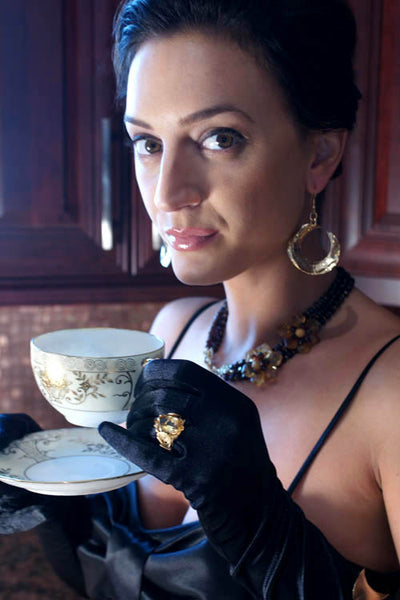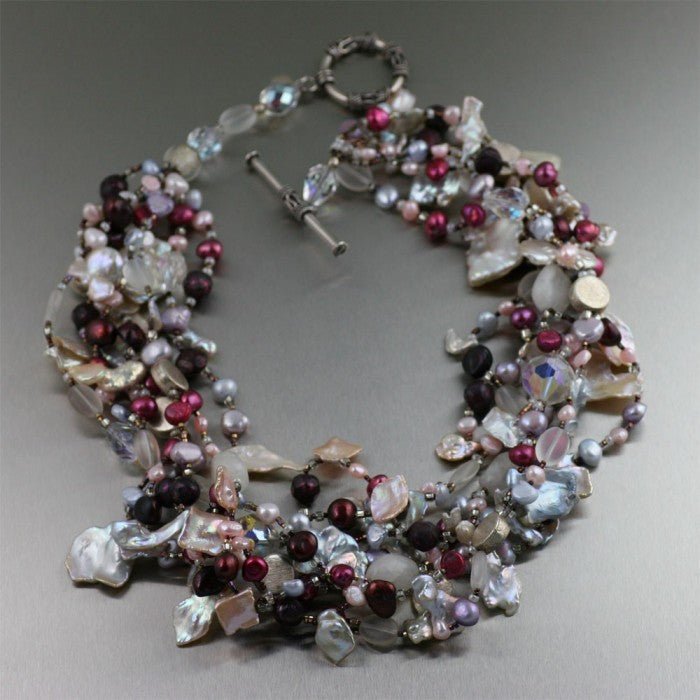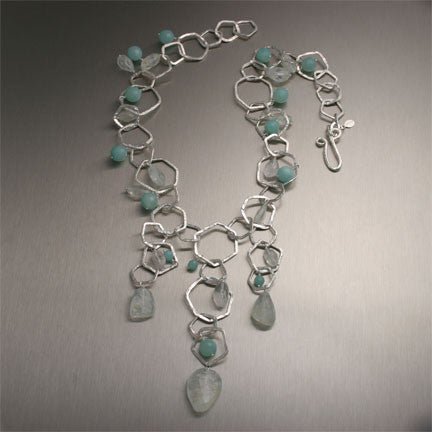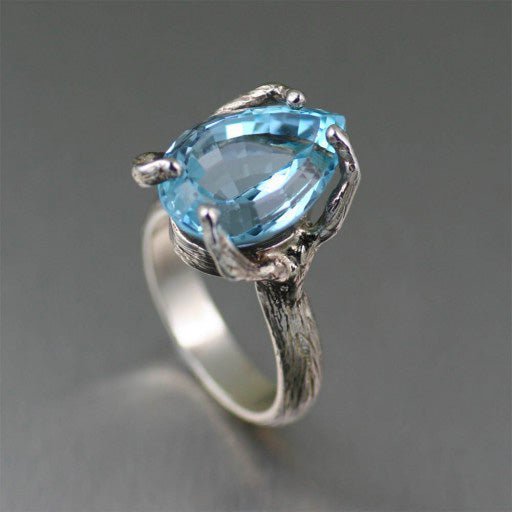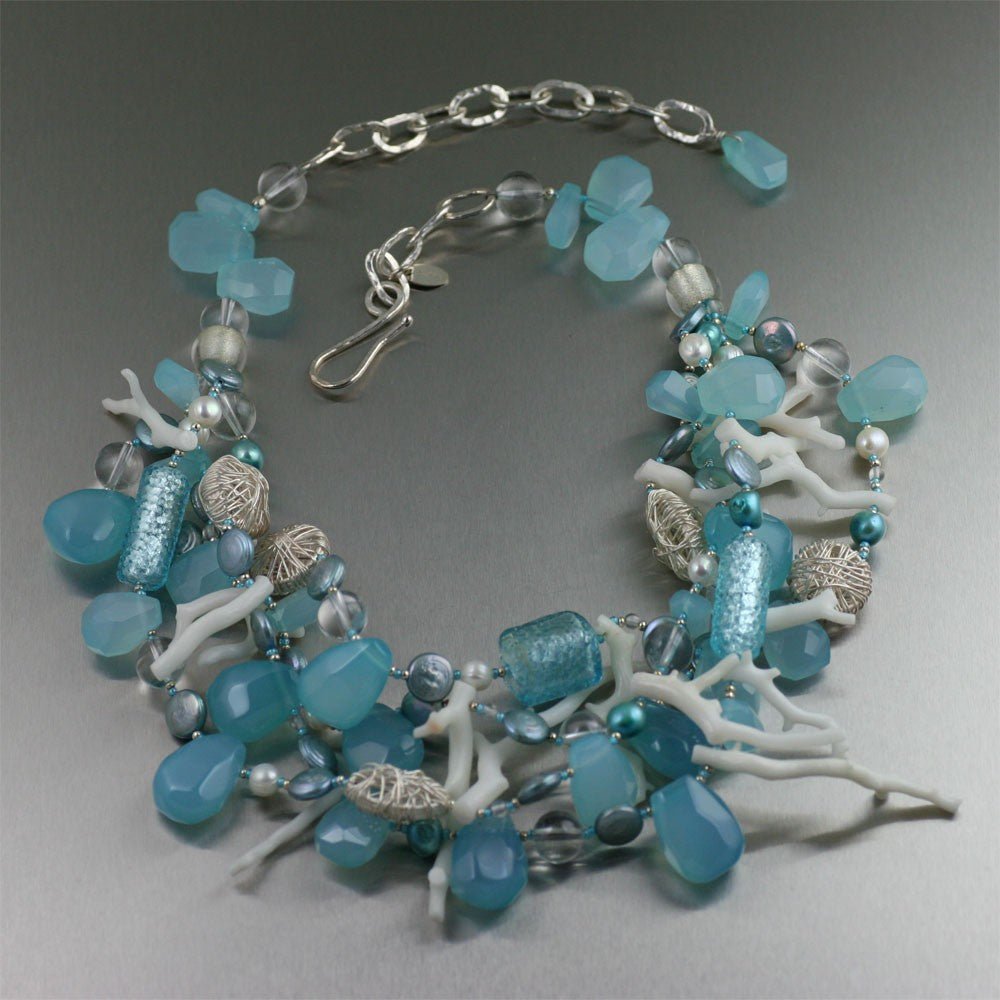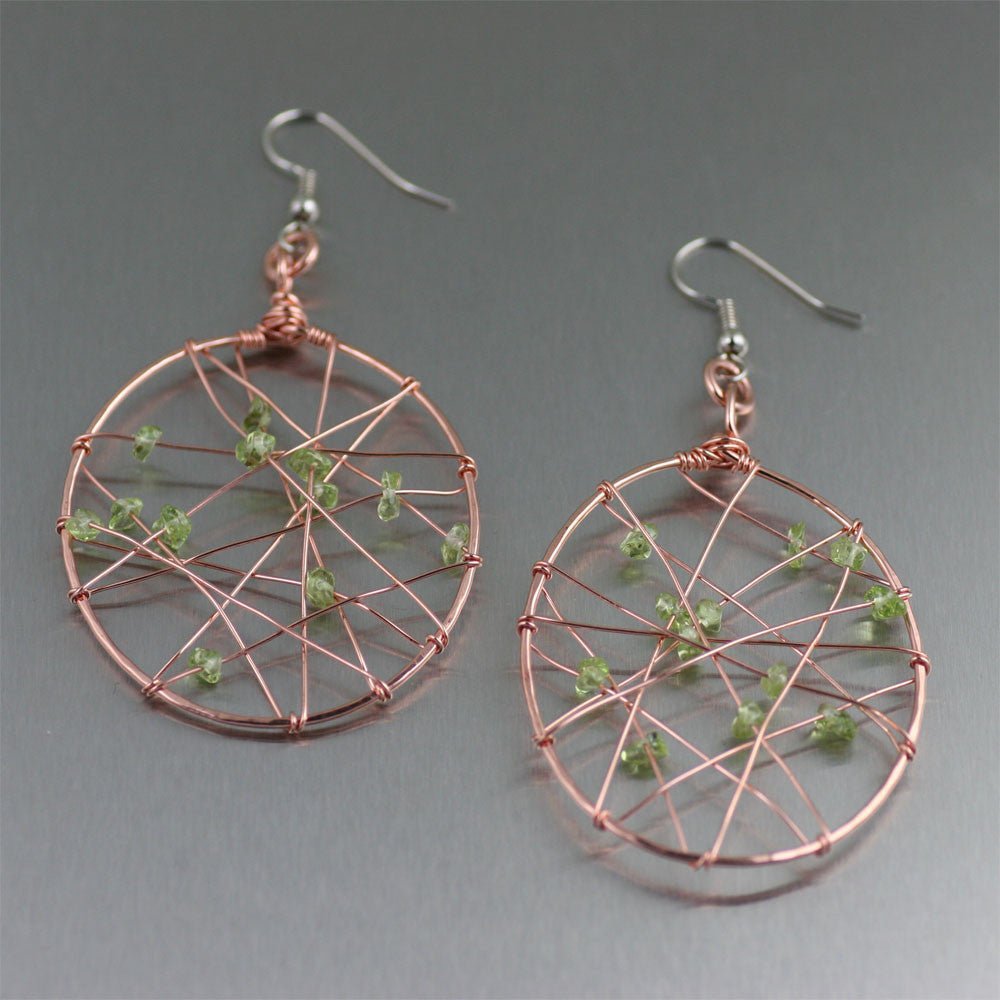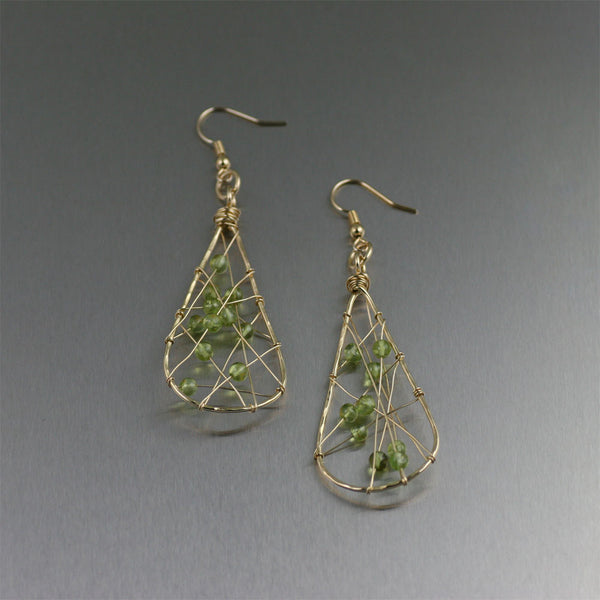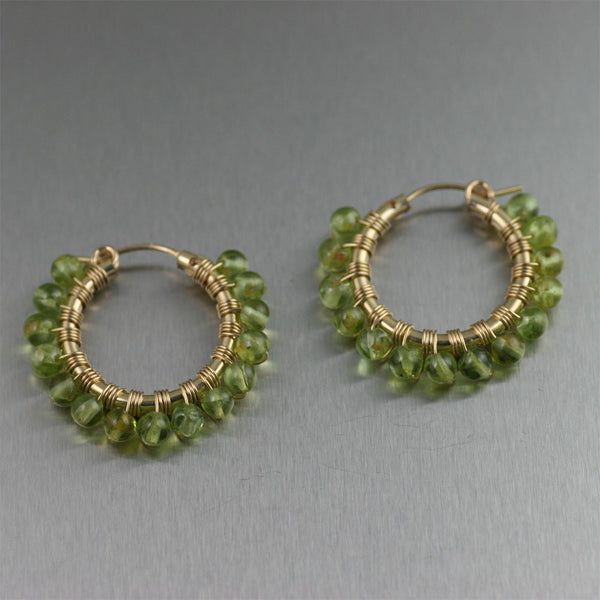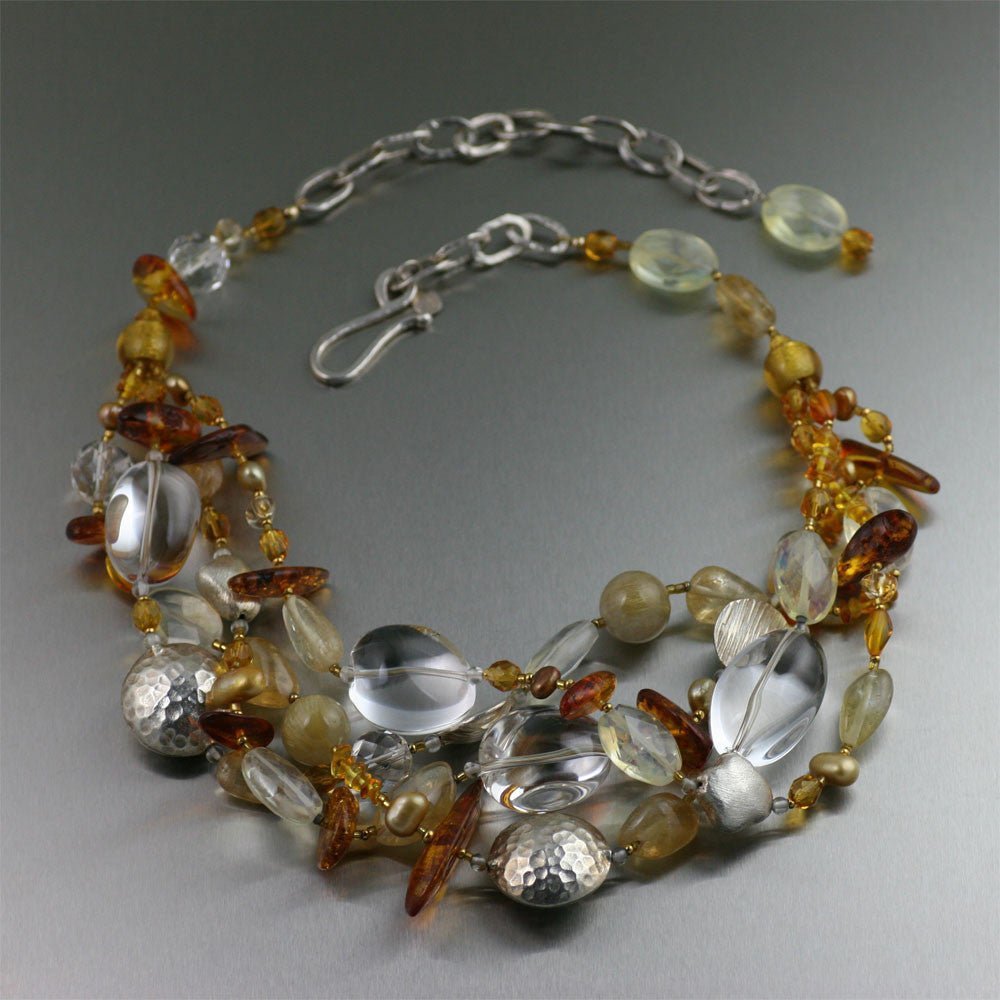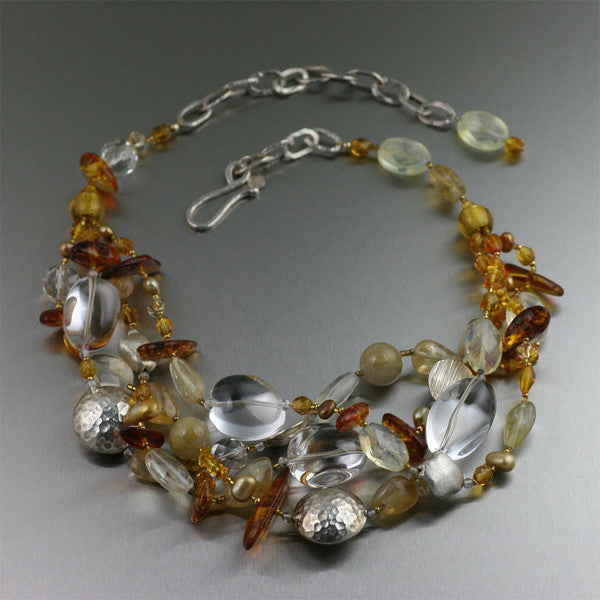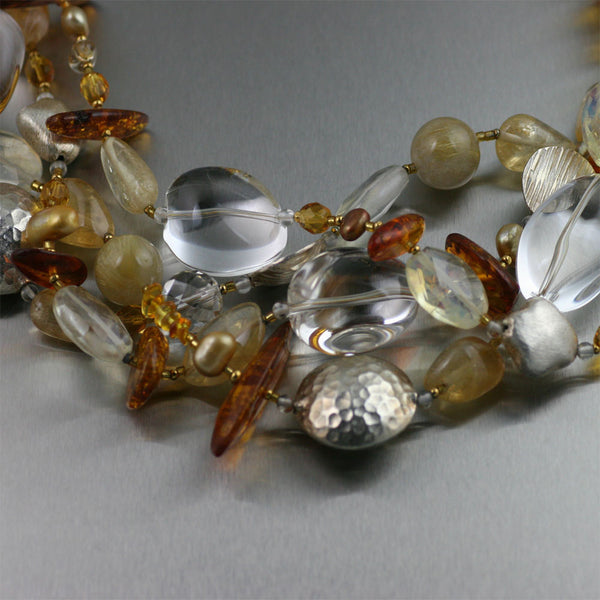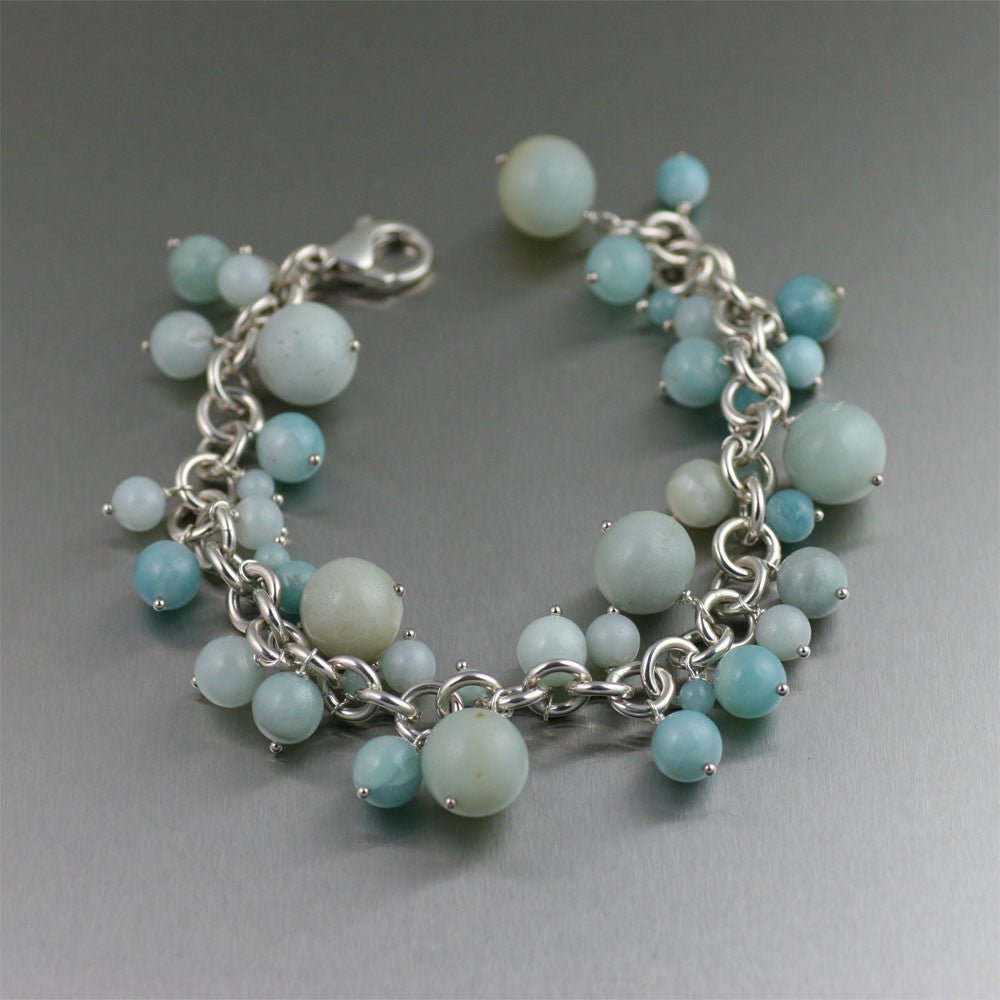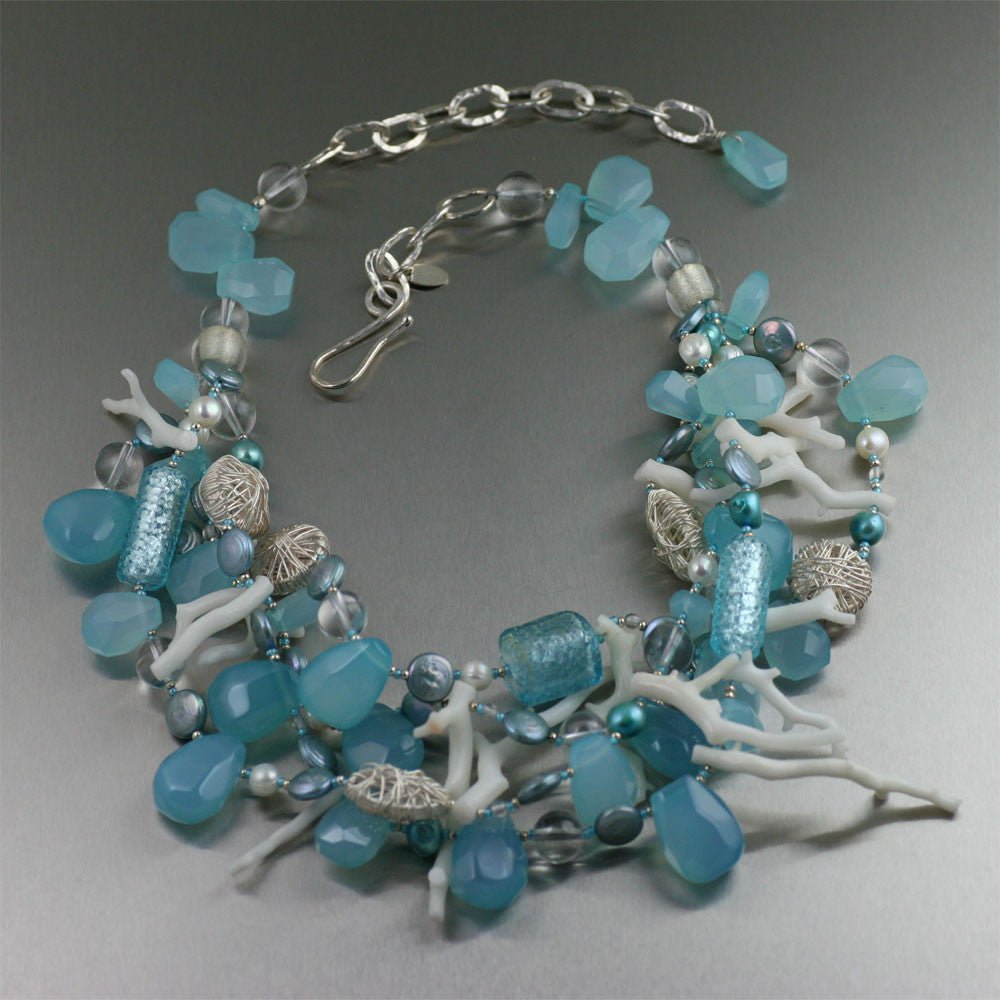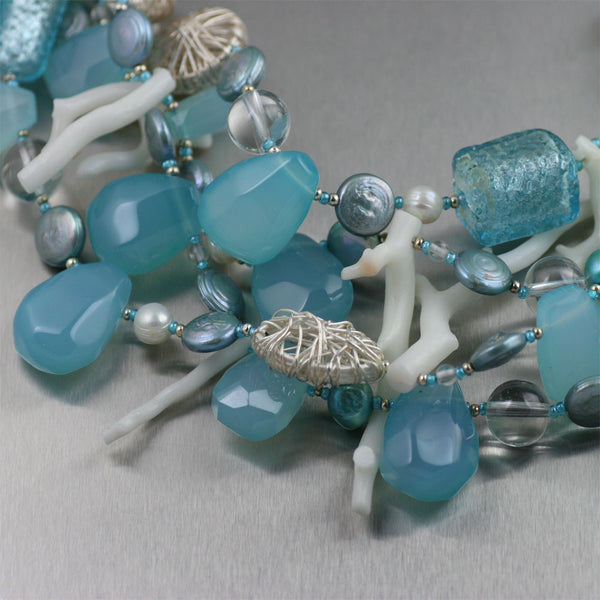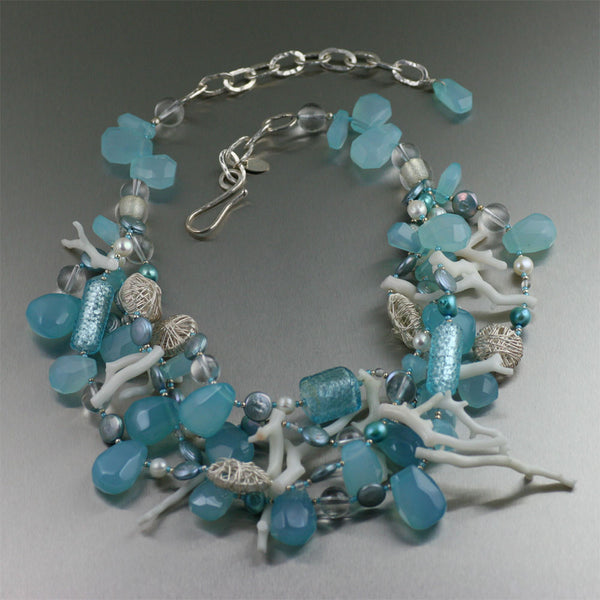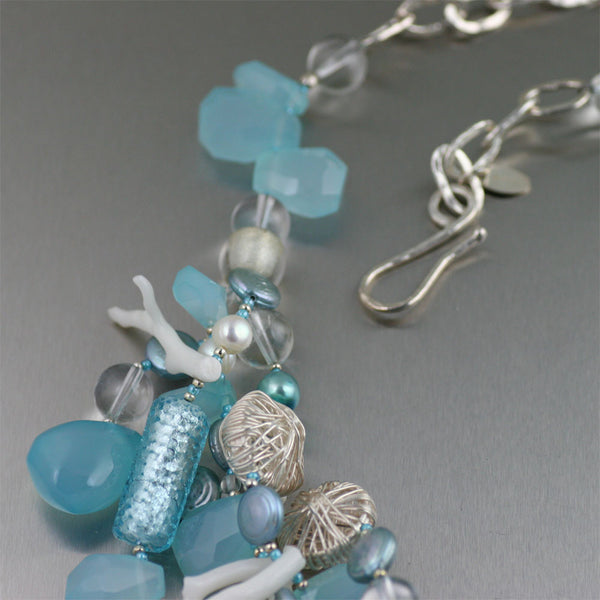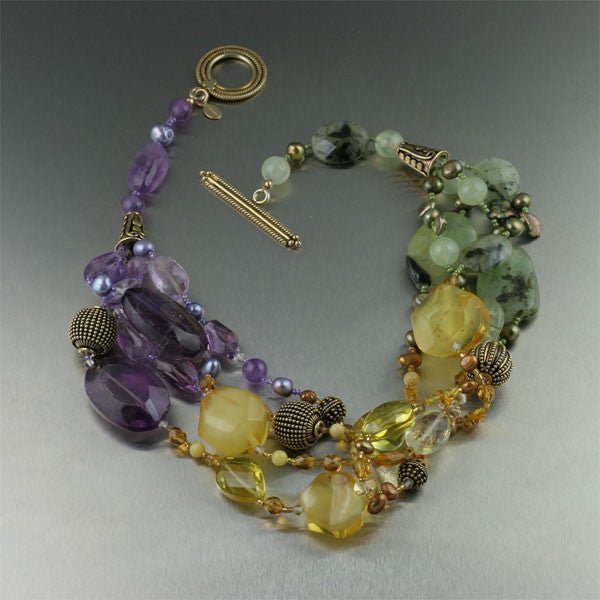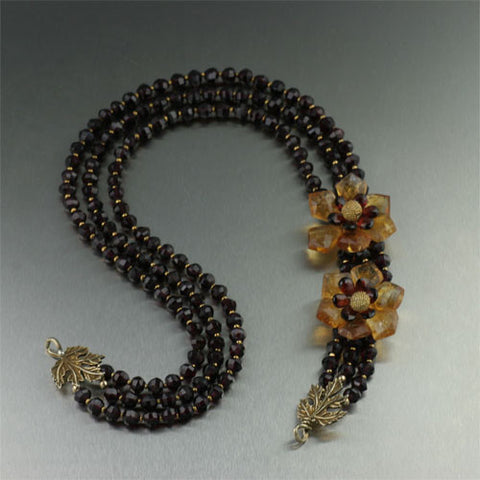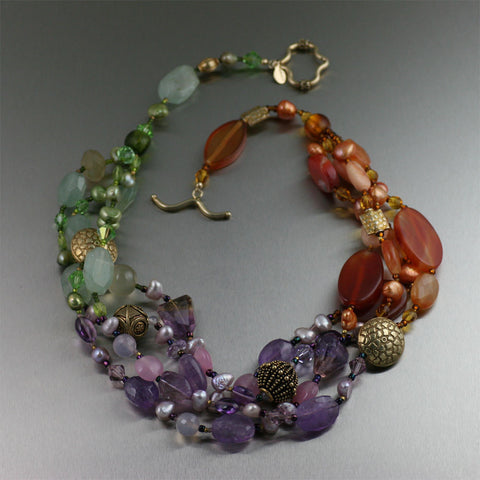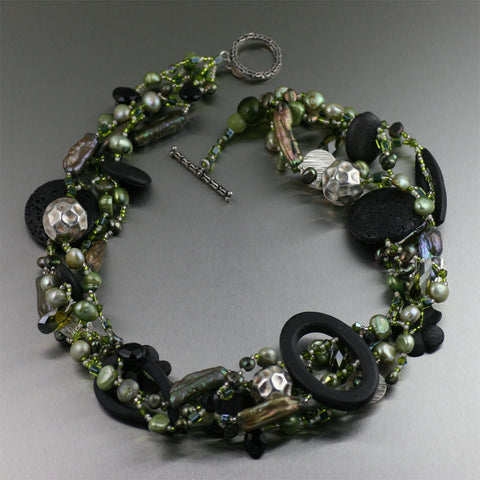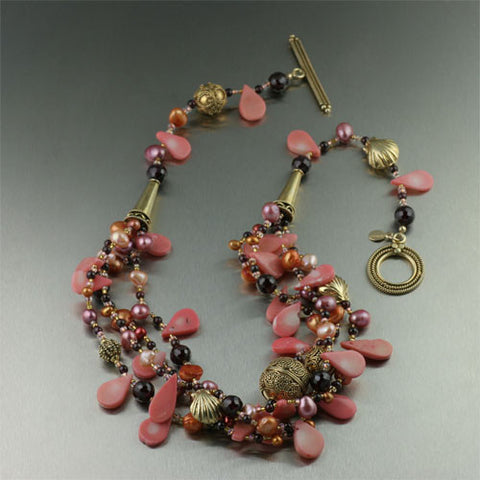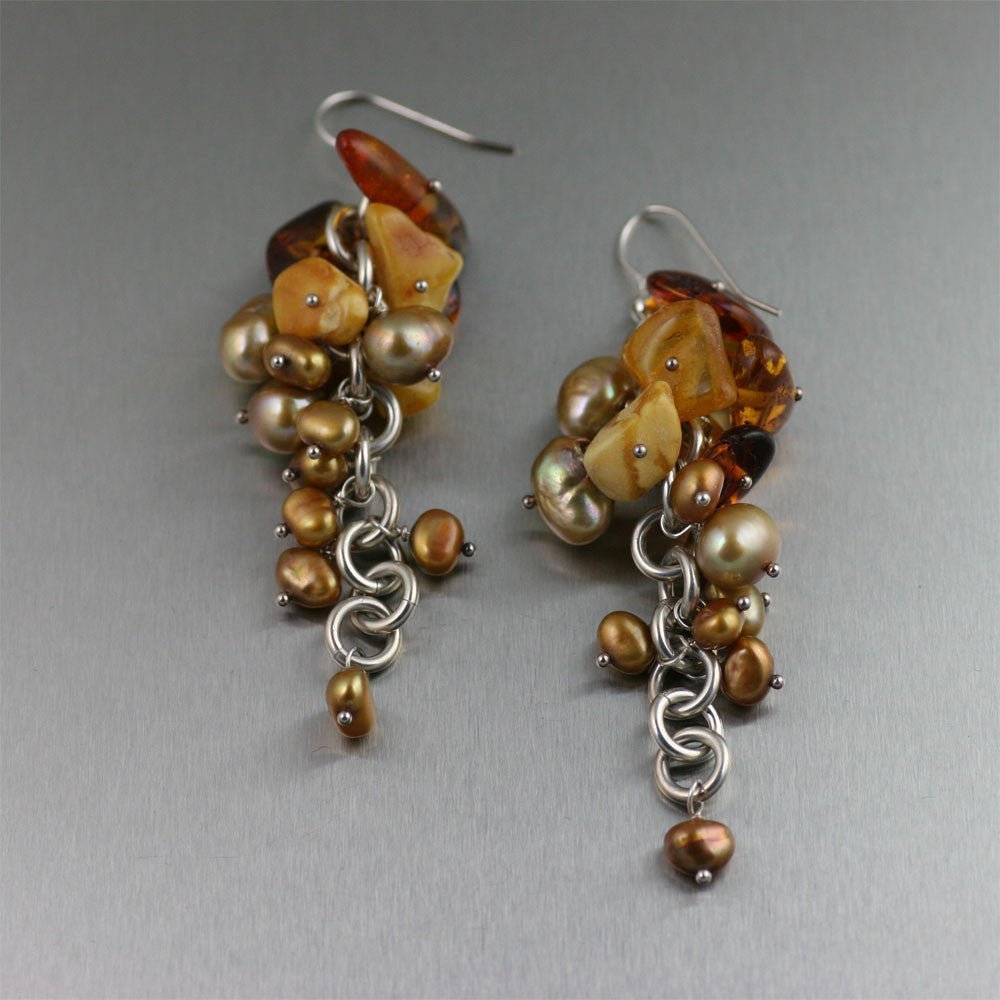Gemstone Jewelry Blog
Introducing our luxurious collection of gemstone jewelry, where each piece is meticulously crafted to showcase the natural beauty and vibrant colors of our exquisite gemstones. From dazzling gemstone cocktail rings and elegant gemstone rings to statement-making large faceted gemstone rings, our unique designs are perfect for those seeking a touch of sophistication and glamour. Adorn yourself with our exquisite beaded gemstone necklaces, featuring carefully selected beads that complement the vibrant hues of the gemstones. Complete your look with our enchanting gemstone pendants, designed to captivate and inspire with their intricate details and alluring charm.
Experience the enchanting world of our gemstone jewelry, where elegance meets allure, and color meets radiance. Adorn yourself with sophistication and sparkle, and find the perfect piece to express your unique style and enhance your natural beauty. Unleash your inner radiance and let our jewelry illuminate your path.
Fine Gemstone Jewelry Throughout the Year
When people think of fine gemstone jewelry, they traditionally think of the holidays. Whether you are dressing up for Christmas parties or New Year’s Eve, this type of jewelry is usually reserved for these occasions and then put away for the rest of the year. This is really a shame for two reasons. People have bought you that jewelry because they love you. Or, you have bought the jewelry because you love it. Either way, this love is only being expressed and shown one time a year.
For many folks, fine jewelry gets relegated to the back of the closet after the holidays. But why keep these sparkling stones hidden away when they deserve to shine? Fine gemstone jewelry like John S. Brana's exquisite designs can add pizzazz to any outfit, any day of the year.
Grandeur Galore
Treating yourself to luxe jewelry doesn't need to be justified by a special occasion. Every day is an occasion when you decorate yourself in gems that make your heart sing! Still, old habits die hard. If you find yourself saving that favorite necklace or pair of earrings for date nights or dressy events, it's time for a new perspective.
These jewelry pieces are meant to be worn and enjoyed frequently. After all, life is too short not to let your inner fabulousness sparkle! Fine jewelry brings a sense of richness and refinement to daily outfits. Even in casual wear, a statement gemstone ring, pendant, or bracelet takes your look up a notch.
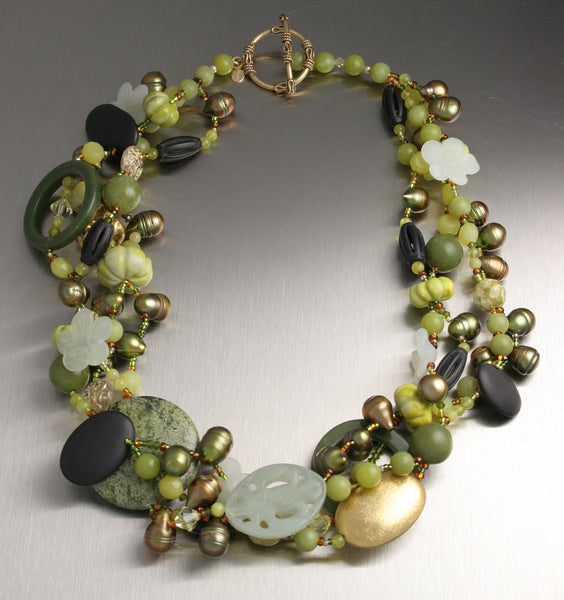
Fine gemstone jewelry should be worn throughout the year, and not just on special occasions. Wearing jewelry that was bought with love should be an everyday thing – not just for when you want to feel special. Feel special everyday!
One reason people choose not to wear their fine jewelry more often than they do is because they are frightened of losing it, damaging it, or wearing it out. If your jewelry is of the finest quality, it will not wear out. If you take care of it properly, you should not be able to damage it. Learning when to wear and not wear a particular piece is very important.

With diamonds and other precious stones, it is imperative that you get the piece checked out by a jeweler at least once a year to ensure that the setting is secure and there is no existing damage to any part of the piece. Once you feel secure in a stone’s setting, you will worry less about wearing it more often.
If you fear losing or breaking a piece of fine gemstone jewelry, then make sure you have photographed the piece, had it appraised, and had it added to your homeowner’s insurance. This may cost you a little, but by doing so, you will be able to replace it should something happen.
So unlock the full potential of your jewelry collection! Here are tips for incorporating those dazzling gems into your year-round wardrobe:
Key Strategies
- Match metals. Stick to the same metal tones in your jewelry and other accessories for a pulled-together look. Mixing silver, gold, and rose gold can appear clashing.
- Consider settings. Highly embellished settings suit flashy occasions, while simpler bezels work for everyday.
- Mind the occasion. Flashy gems like emeralds may overwhelm a daytime office look, but shine at night events. Save understated stones like moonstone for work.
- Layer wisely. Stack dainty bracelets and necklaces for versatility. Limit layers to 2-3 pieces to avoid looking cluttered.
- Know gem care. Take off jewelry before swimming, exercising, gardening, and cleaning. Store properly to avoid damage.
Styling for Every Season
Fine jewelry transcends trends when styled properly for the season. Follow these tips:
Spring
- Lightweight chains and pendants pop against bare skin and peeking out of sundresses.
- Stackable rings and bangles in bright gem tones like citrine add zest to light outfits.
- Floral inspired pieces with delicate gold filigree and gem accents evoke the new blooms of spring.
Summer
- Nautical motifs like John S. Brana's Pink Coral Garnet Beaded Gemstone Necklace feel fitting for seaside activities.
- Pops of color from gems like peridot, tourmaline, or coral complement summery prints.
- Minimalist earrings allow the beauty of the gems to shine without overwhelming.
Fall
- Warm hues like carnelian, amber, and citrine complement autumnal color palettes.
- Earthy textures like etched gold and rough-cut stones match the season's natural beauty.
- Layered necklaces with colored gems make a bold statement atop cozy knits.
Winter
- Icy stones like diamonds, white sapphire, and quartz glitter for holiday soirees.
- Dark metals like hematite and blackened silver pop against jewel-toned party looks.
- Statement earrings command attention and draw eyes up from lush winter wraps.
Who Would Love This Jewelry?
John S. Brana's gemstone designs appeal to those who appreciate:
- Artistry - Each piece features unique shapes, custom settings, and eye-catching asymmetry.
- Color - Vibrant gems in exquisite cuts and color gradations delight the eye.
- Meaning - Many designs incorporate spiritual stones said to impart healing energies.
- Adventure - Organic, tribal, and global motifs embody exoticism and exploration.
- Luxury - Quality materials like 18k gold, AAA gems, and exquisite craftsmanship ensure heirloom quality.
Personality Types
Here are some personalities that would love sporting John S. Brana jewelry:
- The Free Spirit - Drawn to bohemian styles, ornamental motifs, and stones with mystical properties.
- The Jetsetter - Appreciates exotic designs that evoke far-flung locales and cultures.
- The Trendsetter - Seeks unique pieces that express individuality and make a statement.
- The Romantic - Adores feminine, delicate pieces with symbolic meaning and sentimental value.
- The Collector - Passionate about quality, artistry, and stones of exceptional caliber.
Occasions to Dazzle
John S. Brana's jewelry makes an impression no matter the occasion. Here are some prime opportunities to show it off:
Everyday Wear
- Running errands
- Casual weekends
- At the office with professional outfits
Date Nights
- Fancy dinners out
- Theater, concerts, and events
- Cocktail parties and happy hours
Special Events
- Weddings
- Red carpet and black tie galas
- Charity benefits and fundraisers
- Cruises and vacations
Milestones
- Anniversaries
- Birthdays
- Graduations
- Promotions
Style Your Gems with Confidence
Don't reserve your jewelry just for special times - make every day sparkle with John S. Brana's exquisite designs! With proper care and styling, fine gemstone jewelry can be incorporated into any wardrobe. Express your personal flair and cherish each day's moments with these dazzling wearable works of art.
Click Here To Find Fine Gemstone Jewelry
June Birthstones: The Allure of Pearls and Moonstones
Unveiling the Mystique of June Birthstones: Pearls and Moonstones
For those fortunate to be born in June, a plethora of stunning June birthstones await to be discovered. Among these are the timeless pearls and the enchanting moonstones. Pearls, with their unique luster, can be imaginatively fashioned into a variety of jewelry pieces, including brooches, earrings, necklaces, and rings. On the other hand, moonstones, with their distinctive iridescence, can be polished, carved, or set into virtually any jewelry design. Both of these gems offer a unique aesthetic appeal when incorporated into June birthstone jewelry.
Delving into the Allure of June Birthstones:
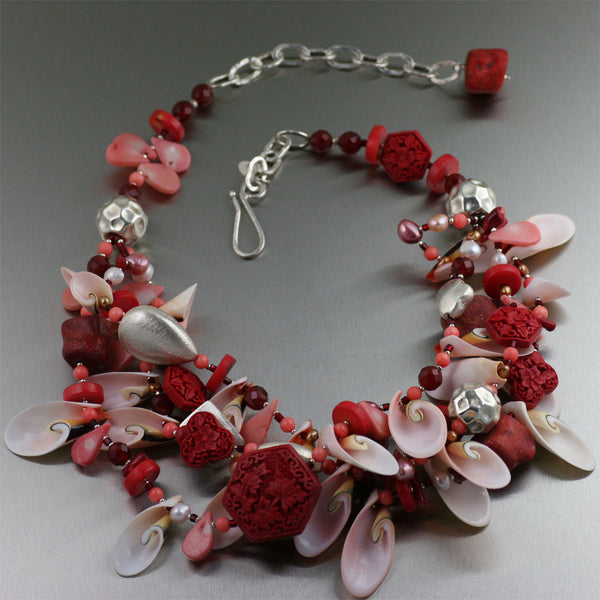
The Timeless Elegance of Pearls
Pearls have been a symbol of elegance and sophistication for centuries. The 1500s, often referred to as 'the pearl age,' saw an unprecedented admiration for this gem, first in the Roman Empire and later in Tudor England. The uniqueness of pearls lies in their natural formation - they are the only gems produced by living sea creatures and require no additional polishing or faceting to reveal their inherent beauty. Pearls are formed when an irritant gets trapped within a mollusk, which then coats the irritant with a substance known as nacre, resulting in the creation of a mesmerizing pearl.
While pearls can occur naturally, they can also be cultured or man-made. Regardless of their origin, pearls possess a delicate luster that ranks them among the most coveted gemstones. Their color varies depending on the species of mollusk and the environment in which they are formed, offering a spectrum of shades from gray, cream, black, yellow, blue, green, lavender, to mauve. The world's largest pearl, the Pearl of Asia, measures three-inches in length, two-inches in width, and weighs one-third of a pound, a testament to the grandeur of this gem.
The Enchanting Allure of Moonstones

With a mystique as intriguing as their name suggests, moonstones are a variety of feldspar that have captivated jewelry lovers for centuries. Named by Pliny, a Roman natural historian, moonstones are believed to change their appearance with the phases of the moon. The interplay of feldspar and albite layers gives moonstones their characteristic textured appearance. Often seen in hues of blue and white, moonstones bear a striking resemblance to scratched blue glass.
Jewelry featuring moonstones is a perfect choice for those who are drawn to the mystical and those who favor the cool tones of winter. In India, moonstones are revered as sacred gemstones, often displayed against a yellow backdrop, a sacred color. They are believed to house a spirit whose purpose is to bring good fortune, making them an excellent choice for June birthstones.
Unveiling the Mystique of Moonstone: History, Geology, and Spiritual Significance
Unveiling the Mystique of Moonstone: A Gemstone of Legends
Steeped in the mystique of ancient folklore, the Moonstone has been a beacon of fascination for centuries. This ethereal gemstone, with its soft, shimmering glow, was once thought to be a spiritual conduit to the lunar goddesses of the Greeks - Selene and Phoebe, and their Roman counterparts, Luna and Diana.
The allure of the Moonstone lies not only in its beauty but also in the legends that surround it. It was revered as a talisman of psychic enhancement and clairvoyance, a spark to ignite passion, a harbinger of good fortune, a guardian for travelers, and a soothing balm for turbulent emotions.
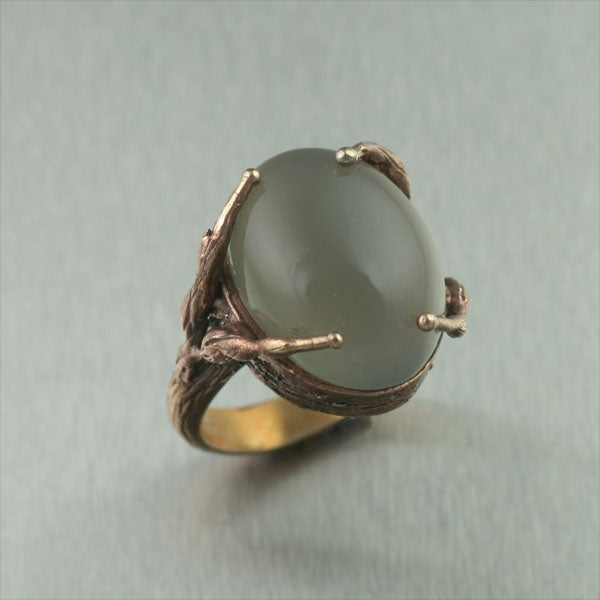
Moonstone: The Opalescent Marvel of the Mineral Kingdom
Moonstone, a captivating variant of Orthoclase, is a gemstone that is as intriguing as it is beautiful. This mineral is a common component of granites and other felsic igneous rocks, often found in large crystals and masses within pegmatite veins. When devoid of its characteristic pearlescence and opalescence, Orthoclase serves a more mundane purpose in the creation of porcelain and as an ingredient in scouring powders.
The Moonstone, however, is anything but mundane. It graces the earth in an array of colors, from the soft blush of pink to the vibrant hues of yellow and green, the earthy tones of brown, the pristine white and cream, and the tranquil blues. This gemstone is a global marvel, found in the far reaches of Sri Lanka, Burma, India, Australia, Madagascar, Tanzania, Brazil, the United States, and the European Alps.

Embrace the Enchantment of Moonstone
Whether set in sterling silver or bronze, whether white, grey, or peach, every Moonstone carries within it a piece of the moon's mystique, a whisper of ancient legends, and a touch of the divine. To wear a Moonstone is to carry a piece of the cosmos with you, to be touched by the magic of the moon, and to embrace the enchantment of a gemstone born from the heart of the earth.
FAQ's
Q1: What is the significance of Moonstone in history?
A: Moonstone has a rich history and was revered in ancient times as a spiritual link to the moon. It was associated with the divine feminine energies of Greek and Roman goddesses and was believed to enhance psychic abilities, bring good fortune, protect travelers, and calm emotions.
Q2: What is Moonstone made of?
A: Moonstone is an opalescent variety of Orthoclase, a mineral that forms a key component of granites and other felsic igneous rocks. It is often found in large crystals and deposits within pegmatite veins.
Q3: Where is Moonstone found?
A: Moonstone can be found in various parts of the world, including Sri Lanka, Burma, India, Australia, Madagascar, Tanzania, Brazil, the United States, and the European Alps.
Q4: What colors does Moonstone come in?
A: Moonstone comes in a variety of colors, including pink, yellow, green, brown, white, cream, and blue.
Q5: What is the use of Orthoclase when it's not pearly and opalescent?
A: When Orthoclase lacks its characteristic pearly sheen, it is used in the creation of porcelain and as an ingredient in scouring powders.
The Aquamarine: A Gemstone of Serenity and Courage

Aquamarine means “sea water” in Latin, alluding to its color. Most natural colored aquamarine is a light blue-green or even light green variety of beryl. Prior to the 1900’s this was the preferred color for aquamarine. Today, aquamarine is routinely heat-treated to remove the green component, thereby producing a permanently colored blue stone. Quite large stones, ranging from several carats to more than ten carats are relatively common.
The most common cut is the emerald type, although mixed oval or pear-shaped cuts are no infrequent. The more intense the blue color, the more valuable the stone. Under magnification, aquamarines usually have a high transparency and clarity. They are also very durable and their color is evenly distributed. Most aquamarine comes from Brazil, where crystals weighing several kilos have been found. Other deposits include Russia, Madagascar, India, Ireland, the United States, and recently Afghanistan.
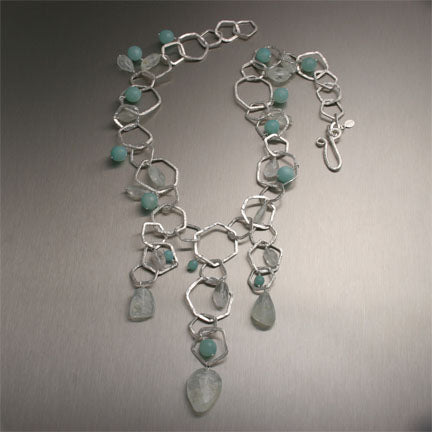
Aquamarine is commonly believed to be the stone of courage and its calming energies are said to reduce stress and quiet the mind. In ancient times, aquamarine was believed to counteract the forces of darkness and procure favor from the spirits of light. I was commonly carried by sailors as a talisman against drowning.
The above set of earrings, bracelet, and necklace features faceted aquamarine and amazonite nuggets on hammered fine silver and can be found in my SoMa Collection along with many other selections in hammered fine silver, copper, 14K Gold Filled, 14K, and 18K Gold.
FAQ's
Q1: What is the natural color of Aquamarine?
Aquamarine naturally exhibits a light blue-green or even light green hue. However, modern aquamarines are often heat-treated to remove the green component, resulting in a pure blue stone.
Q2: What is the most common cut for Aquamarine?
The emerald cut is the most common for aquamarines. However, mixed oval or pear-shaped cuts are also frequently used to enhance the stone's inherent beauty and showcase its intense blue color and high transparency.
Q3: Where does Aquamarine come from?
Brazil is the largest producer of aquamarines globally. Other significant sources include Russia, Madagascar, India, Ireland, and the United States. Recently, Afghanistan has also emerged as a promising source of this gemstone.
Q4: What does Aquamarine symbolize?
Aquamarine is commonly believed to be the stone of courage and serenity. It was carried by sailors as a talisman against drowning in ancient times and was thought to counteract dark forces while attracting spirits of light.
Q5: Where can I find Aquamarine jewelry?
You can find exquisite aquamarine jewelry pieces in John S Brana's SoMa Collection. The collection features handcrafted earrings, bracelets, and necklaces set with faceted aquamarines on hammered fine silver or gold settings.
Your Guide to the Blue Topaz Gemstone
Jewelry Must-Have: A Gem-Drenched Necklace
If you're looking to build a beautiful jewelry collection and have something for every occasion, you simply must have a stylish gemstone necklace at the ready. The word "gem-drenched necklace" might have you thinking of sparkling rubies and sapphires, but semiprecious gem necklaces are often more versatile, as you can wear them for dressy or casual occasions. We have many gemstone necklaces in the John S. Brana Jewelry Collection, and you can find the perfect one for your jewelry box in four simple steps:
1. Choose the Colors. With gemstones, it's always best to start your search by thinking about the color that you want. Start by considering what you're planning to pair with your necklace. Are you looking for something that will go with just about anything? A piece in black like our Freshwater Pearl Onyx Necklace is a great choice. If you're looking for a necklace to add color to pieces, think about what color family you prefer. Do you want bold jewel tones like our Carnelian Necklace? Pastels like our Pink Coral Garnet Necklace? Earthy colors like our Baltic and Dominican Amber Necklace? By thinking about what colors you wear most often, you can easily find the right gemstone necklace to bring color to your favorite outfits.
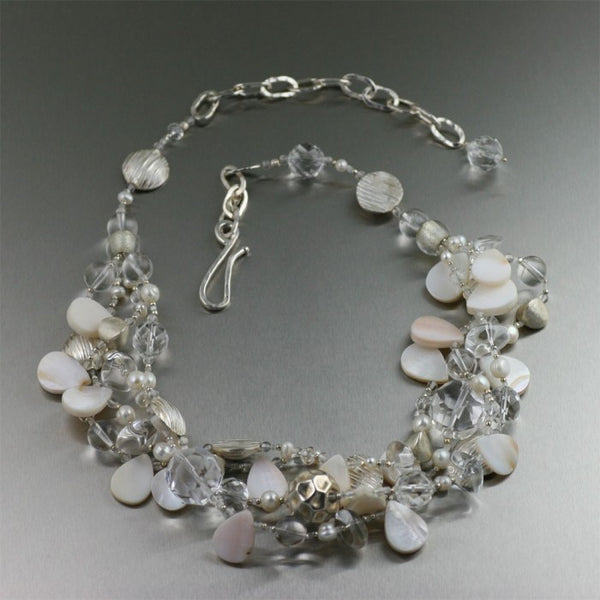
2. Select the shape. After you determine what colors you like, you should think about the shape of the necklace. A V-shaped necklace like our 14K Gold-filled Garnet Chain Maille Necklace will suit plunging necklines like halters and V-necks. Rounder necklaces like our Keishi Cornflake Pearl Necklace are better for round necklines like scoops and crewnecks. An asymmetrical necklace like our Faceted Garnets and Citrine Flower Necklace will look perfect with an off-the shoulder or strapless look. Because you want to be able to wear your necklace with many wardrobe pieces, take some time to look at the necklines of some of your tops and dresses when selecting a shape. 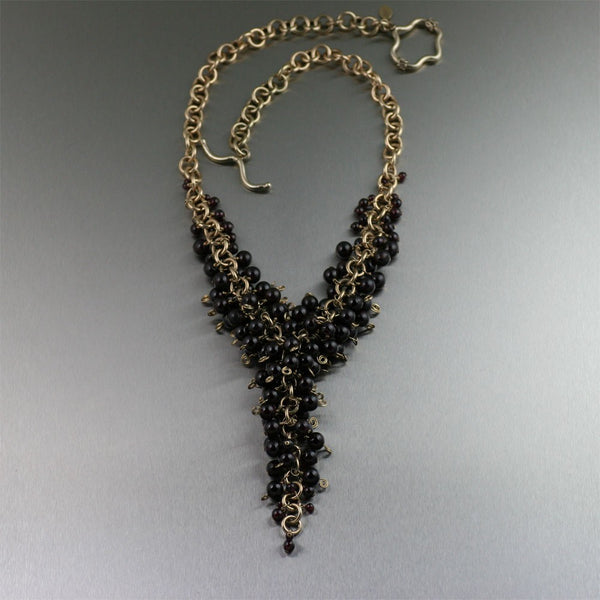

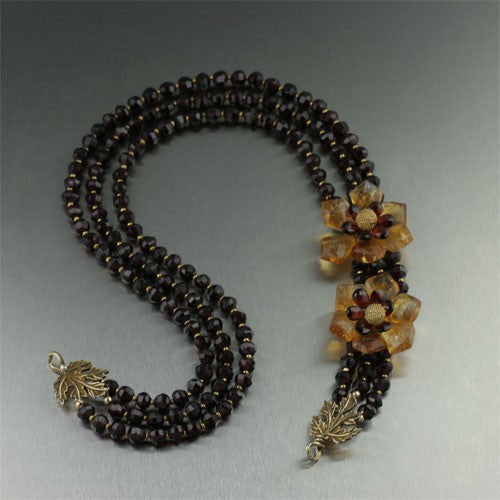
3. Determine the Length. Once you have made decisions about color and shape, you need to figure out just how long of a necklace you need. You may want to use string or yarn to see how necklaces of different lengths will fit. Another option is to pick a necklace that allows you to adjust the length like our Apatite Wire Wrapped Fine Silver Necklace or our Blue Chalcedony White Coral Necklace. This will give you the flexibility to alter the length to match the necklines of whatever you're wearing. 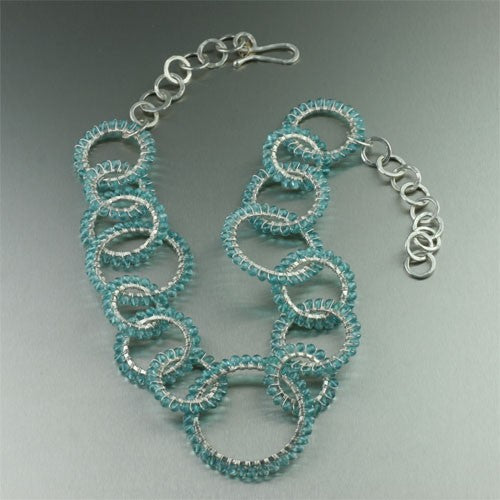

4. Picking Your Style. Now that you've made decisions about the color, shape and length, you'll find that your gemstone necklace options have been narrowed to just a few styles. This leaves you free to select the one that best suits your individual tastes.
There you have it--four simple steps to finding the perfect gem-drenched necklace to add to your jewelry box. Now, you're ready to explore all of the gemstone necklaces in the John S. Brana Handmade Jewelry Collection to find your favorite.
Peridot – August’s Birthstone
Peridot Jewelry for your August Birthday
Peridot is a lime green gem recognized as the traditional birthstone for the month of August. Giving someone a piece of jewelry containing this birthstone is thought to bring the wearer protection and good luck. Peridot is associated with faithfulness, love, truth, and loyalty. It is also thought to have healing properties, especially to illnesses relating to the lymph, lungs, sinuses, and breast. The name Peridot originates from the Arabic term “faridat”, meaning gem. It was believed that the Peridot continued to glow with light even as the darkness fell. This may be the reason that the Peridot is often referred to as the “evening emerald”. Learn about August’s birthstone – the Peridot.
Color of the Peridot
Peridots are green in color, although their green shade can slightly vary depending on the iron content of the gem. The meaning of the colors is often represented in various aspects of life, including biblical, social, religious, and Christian symbolism. It is often associated with nature and life. Many people opt for Peridot jewelry where the stone is a sparkling lime green, with an olive or brownish cast. While lime green is a favorable hue for the Peridot, the stone can also be found in yellowish-green, medium green, dark green, and a lovely olive green.Selecting a Peridot
When choosing Peridot jewelry, there are several things one should look for. These include the four C’s: cut, color, carat, and clarity. The color of the stone will be the first thing that most people notice, whether it’s a yellowish green or a dark forest green. When looking for a Peridot, try to find a stone that has a bright green color that is uniform in tone without blotches. This may require some shopping around. A major advantage of choosing a Peridot for your August birthstone is that the stones are far less likely to have marks or inclusions, compared to other gemstones. It’s not at all difficult to find a desirable green Peridot birthstone that has a sense of clarity and intense color. The cut of the Peridot stone will also help to maximize its potential beauty.Like with any stone, the larger the gem, the more expensive in most cases. Peridots tend to be soft in nature, making them better for necklaces, earrings, and brooches, as these areas do not get as much wear as rings and bracelets. To prevent damage to your Peridot stones, it’s important to invest in a quality piece of jewelry. With proper care, your Peridot jewelry has the ability to last for many years. It is the perfect gift for a loved one on his or her birthday, or for any special occasion.
Click Here to Browse More Elegant Handmade Beaded Gemstone Jewelry
Amber Citrine Crystal Quartz Beaded Gemstone Necklace
Stunning Amber and Citrine Crystal Quartz Statement Necklace
For those who love a statement piece, the Barbary Coast collection is perfect for those who choose to build an ensemble around their jewelry. Catch the light and also plenty of admiring glances with this Amber, Citrine, and Crystal Quartz necklace. Round smooth Crystal Quartz and Citrine gemstone beads are mixed throughout with a selection of Amber and Gold Freshwater Pearls. Fine Silver beads accent the necklace with a touch of sparkling shine.
Nature is already a work of art, so using it as an inspiration to create alluring jewelry is an easy trend to get behind. Celebrating the rich colors and textures of the forest, Handmade Jewelry by John S. Brana brings you this amazing hand crafted necklace. Citrine, the most common color of quartz, is best known in the world of crystals and alternative medicine as a gem containing the solar energy of the sun, and many believe it has special healing qualities. Amber is known for its rich color and warm tones. Made from fossilized tree resin, this historic gem has been around since the first caveman gave a pretty stone to his beloved. Quartz is the second most abundant mineral on Earth and is able to catch the light brilliantly.
These three gems combined make a unique and relaxing combination of cascading stones that will compliment any outfit. If you’re hoping to give this necklace as a gift we do ship in a super cute gift box. This popular collection has been known to inspire brilliance, relaxation and warm feelings of zen. Maybe it’s the deeply vibrant colors or perhaps the tumbling string of gems. Either way, you’ll be happy to have this piece in your jewelry box!
Amazonite Gemstone Jewelry
Varieties of Amazonite
Amazonite is a colorful gemstone often used in jewelry, ranging from green, blue-green, to yellow-green. As a green variety of microcline feldspar, amazonite can be found in a variety of shapes, sizes, and hues. Its name comes from the Amazon River found in Brazil, from which green stones were originally obtained. The name may also refer to the green shades of the rainforest along the river that were reflected in the gemstones. Due to its desirable bright green color, amazonite is commonly cut and used as gemstones in jewelry. It is generally cut en cabochon, featuring a convex and rounded polished surface. For many years, the source of amazonite’s unique colour was a mystery. Many people believed that amazonite contained copper, as copper compounds are often found with green and blue colors. Modern studies suggest that the blue-green color of amazonite results from lead found in the feldspar.
Colors of Amazonite
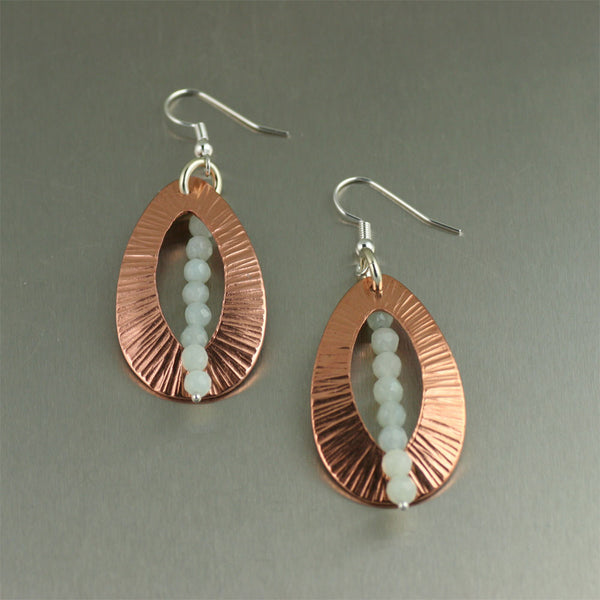
Amazonite can vary in color, but is most often see in green, blue-green, or yellow-green varieties. Some pieces of amazonite gemstone can also be seen with fine white streaks. The overall color of the stone will ultimately depend in the variety. Traditional amazonite, also referred to as amazon-stone, is typically seen in a pale blue-green colour. Sometimes the color sways more towards a richer sky blue. Russian amazonite is a deeper blue-green color with streaks of white. While rarer, Russian amazonite is primarily collected in areas throughout Colorado (US) and Russia.
Benefits of Amazonite
Amazonite gemstone jewelry is often given as gifts for a variety of occasions due to the host of benefits they are believed to bring the wearer. The power of an amazonite is thought to balance the masculine and feminine energy of a male and female. It is also supposed to promote practicality and kindness and help balance one’s emotions. Amazonite has several other benefits, such as giving the wearer physical stamina and balancing the throat chakra. For jewelry artists, amazonite provides a useful stone for jewelry-making.
Amazonite Cut and Clarity
Amazonite gemstones tend to be opaque to translucent; however, they are rarely transparent. Whether set in silver, gold, or other popular jewelry metals, amazonite gemstones can be used to create beautiful jewelry. Bracelets, rings, necklaces, pendants, and brooches can also be encrusted with colorful gemstones of various sizes and shapes. The style of cutting known as cabochon, results in a convex form that is highly polished but not faceted. It is often seen with a flat or has a subtle domed base.
A cabochon can be cut into nearly any shape, depending on the design of the artist, although oval is by far the most common of shapes. Amazonite has been used throughout history for ornamental decoration due to its lovely blue-green colors and diverse look. The stone can be found in the United States, Zimbabwe, Brazil, Russia, Namibia, and Australia, and the soft stone ranges from 5 to 6 on the Mohs scale. Whether you’re buying the piece for yourself or for someone that you care about, use the power of amazonite jewelry.
Blue Chalcedony White Coral Necklace
Stunning Blue Chalcedony Beaded Gemstone Statement Necklace
Take the powerful imagery of the ocean with you wherever you go! This necklace is nothing less than a wearable work of art. Handcrafted, each piece is totally unique! You’ll be sure to spark a conversation and total strangers will be enticed to ask you where you found this rare beauty!
Dazzle your senses with shimmering cool shades of ocean blue Chalcedony with Stick Coral. Handmade Aqua Venetian Glass beads, Clear Crystal Quartz, and Aqua Freshwater Pearls are accented by glistening Fine Silver Wire accent beads, creating a necklace with eye-catching bursts of color.
Part of John S. Brana’s signature Sea Cliff collection, this necklace perfectly displays Brana’s flair for naturalistic inspiration. Both the ocean and forestry are strong themes through his popular jewelry line. You won’t find anything like it in stores; this item is one of a kind. Chalcedony has a waxy luster and is commonly white, grey and brilliant shades of blue in color. It has been used in jewelry making and for decoration since ancient times. The color goes perfectly with ocean themed designs and lends itself well to this mixture of gem, coral and beads.
This necklace truly captures the ebb and flow of ocean waves with the chalcedony, glass beads and coral all cascading and tumbling together. A dream for any ocean or nature enthusiast, this makes the perfect gift to remember the perfect trip you took together for all times. These semi-translucent shades of blue and white look fantastic on blondes with cool skin tones but can easily be worn by almost enough because of their multicolored nature. You can’t go wrong with this charming handcrafted necklace that is perfect for dressing up, casual wear or the ultimate accessory for drinks and dancing on an island excursion.
Styling with Beaded Gemstone Necklaces
Make a Statement with Beaded Gemstone Necklaces
Popular, trendy and artistic; the beaded gemstone necklace is a handcrafted thing of beauty which can be made to fit with many styles and color pallets. In fact, the beaded gemstone necklaces you will find here on this website are made from hand-selected semi-precious stones. Textures and colors are combined to create vibrant and fully expressive accessories.
Some of the exquisite stones include; African Opal, Amazonite, Apatite, Carnelian, Chalk Turquoise, Citrine, Garnet, Onyx, and Prehnite.
The practice of wearing beads and gems as jewelry can be traced back 70,000 years ago when the gems were discovered and admired for their beauty. Back then people didn’t have pockets to keep their possessions in so these gems were attached to leather straps and worn around the neck or wrist. Beads, gems and shells have all been used directly as currency for trade in the past as well.
You can find something to fit any style or taste. Use one of these signature pieces to complete your signature look.
Prehnite Amethyst Carnelian Necklace
Brilliant natural colors and a multi-textured design make this necklace a favorite of many. This tri-colored necklace is made from Prehnite, Amethyst, and Carnelian. Freshwater pearls help create the illusion of an underwater adventure.
Freshwater Pearl Onyx Necklace
Get swept away with this stunning Moss Green Freshwater Pearl and Onyx Necklace. Black Lava, hand-carved Onyx Flowers, Swarovski Crystals, and Fine Silver beads carry the natural theme to its fullest potential.
Pink Coral Garnet Necklace
Get into the “pink of things” with this princess-worthy beaded gemstone necklace. Garnet and Pink Coral Tear-drop beads clamor over each other, creating a string of alluring beauty. This necklace makes a perfect gift for those who dream in shades of pink. Just a small sampling of the amazing handcrafted necklaces shows you the potential this style holds. This type of jewelry lends itself well to nature inspired designs that can flatter any woman’s appearance.
All about Amber: Choosing Amber Jewelry
Brief History of Amber
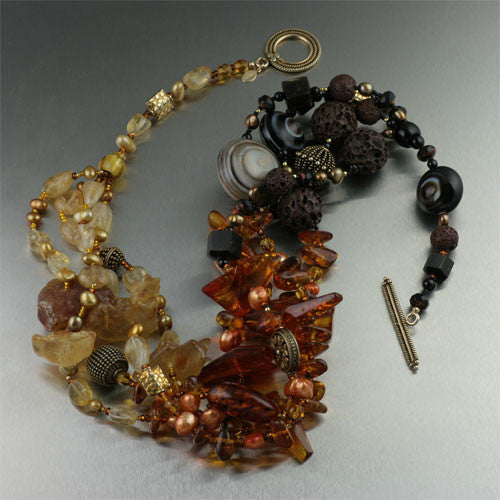
Amber has a rich history with the oldest pieces dating back 320 million years ago. The gemstone has been traded for more than 13,000 years, believed to be one of the first commercially-traded goods. It remains popular in cultures throughout the world, especially across Europe. Unlike many other types of gemstones, amber has several unique features. Due to its ability to naturally store static electricity, amber is warm to the touch. This adds value to authentic amber jewelry, as well as a great addition to any wardrobe. Amber can be found in more than 256 different colors.
Varieties of Amber
There are a multitude of types of amber commonly used in jewelry today. The most expensive, and the best value, is authentic amber. Since these pieces are already very old, they are sure to last many more generations and are often passed down from family to family. Imitation amber jewelry is less expensive, but is just as beautiful as its authentic counterparts. Amber can be found in various color variations, from pale greens and yellows to dark browns and honey-colored pieces. Amber is available in nearly all types of jewelry, including brooches, bracelets, rings, necklaces, pendants, and earrings. It is often paired with silver or gold, but can also be encrusted in copper, brass, aluminum, and other metals. For those who prefer natural jewelry, amber can also be designed with hemp. Many people love amber for its geological history. Some pieces of authentic amber can be found with fossils, insects, and other true specimens forever sealed within the resin.
What to Know about Amber

Amber is a much softer material compared to other types of gemstones. It requires special care as it’s more susceptible to damage. Even mild chemicals and sudden changes in temperature can cause amber to crack or break. Most authentic types of amber jewelry are rated on a scale of hardness from one to ten. From the Baltic region, Baltic amber is the hardest, making it a popular option for jewelry designers.
Caring for Amber Jewelry
Due to its fragility, amber requires careful care and storage to maintain its bright appearance and to prevent damage to the stone. Amber should not be exposed to any type of chemicals, including hairspray and makeup. If these products must be worn, apply them prior to putting on the jewelry. Perfumes can also cause damage to amber stones, and should not be sprayed on the area in which the jewelry is worn. Amber jewelry is relatively easy to clean. Simply use a soft cloth dampened with luke-warm water. Felt can also be used to gently clean the exterior of the amber stone. Avoid using any chemical-based cleaners or soap to clean the stone, as these can cause irreversible damage. Amber can also be wiped clean if the stone is only dusty or wet. To polish the stone, use a soft cloth with a dab of olive oil. Again, felt works great but a new cloth should be used each time for cleaning. It’s important to store amber properly or it can quickly become dull and tarnished. Keep your amber jewelry in a satin bag or soft, dry cloth whenever you are not wearing it. This will help to prevent it from becoming damaged with other pieces of jewelry. Each piece of amber jewelry should be stored separately to avoid scratching. Whether you choose authentic amber of an imitation piece, you won’t be disappointed with the unique look that amber provides.Subscribe
15% OFF YOUR FIRST PURCHASE
As a subscriber, you get first access to my latest jewelry designs and subscriber-only discounts!
Recent Articles
-
Fine Gemstone Jewelry Throughout the Year
Published date:September 22, 2023
-
June Birthstones: The Allure of Pearls and Moonstones
Published date:June 05, 2023
-
Unveiling the Mystique of Moonstone: History, Geology, and Spiritual Significance
Published date:June 01, 2023
-
The Aquamarine: A Gemstone of Serenity and Courage
Published date:July 22, 2022
-
Your Guide to the Blue Topaz Gemstone
Published date:November 21, 2018
-
Jewelry Must-Have: A Gem-Drenched Necklace
Published date:December 15, 2015
-
Peridot – August’s Birthstone
Published date:August 01, 2014
-
Amber Citrine Crystal Quartz Beaded Gemstone Necklace
Published date:March 10, 2014
-
Amazonite Gemstone Jewelry
Published date:February 18, 2014
-
Blue Chalcedony White Coral Necklace
Published date:February 13, 2014
+Most Popular Articles
2023 Handmade Jewelry Trends: A Fusion of Classic and Contemporary
What Clothes Color Combinations Work Best with Copper Jewelry: A Complete Guide
Top 5 Pure Copper Men's Bracelets for 2022
What Clothes Color Combinations Work Best with Copper Jewelry: A Complete Guide
Shine Bright with John S Brana's Dazzling Aluminum Jewelry Collection

